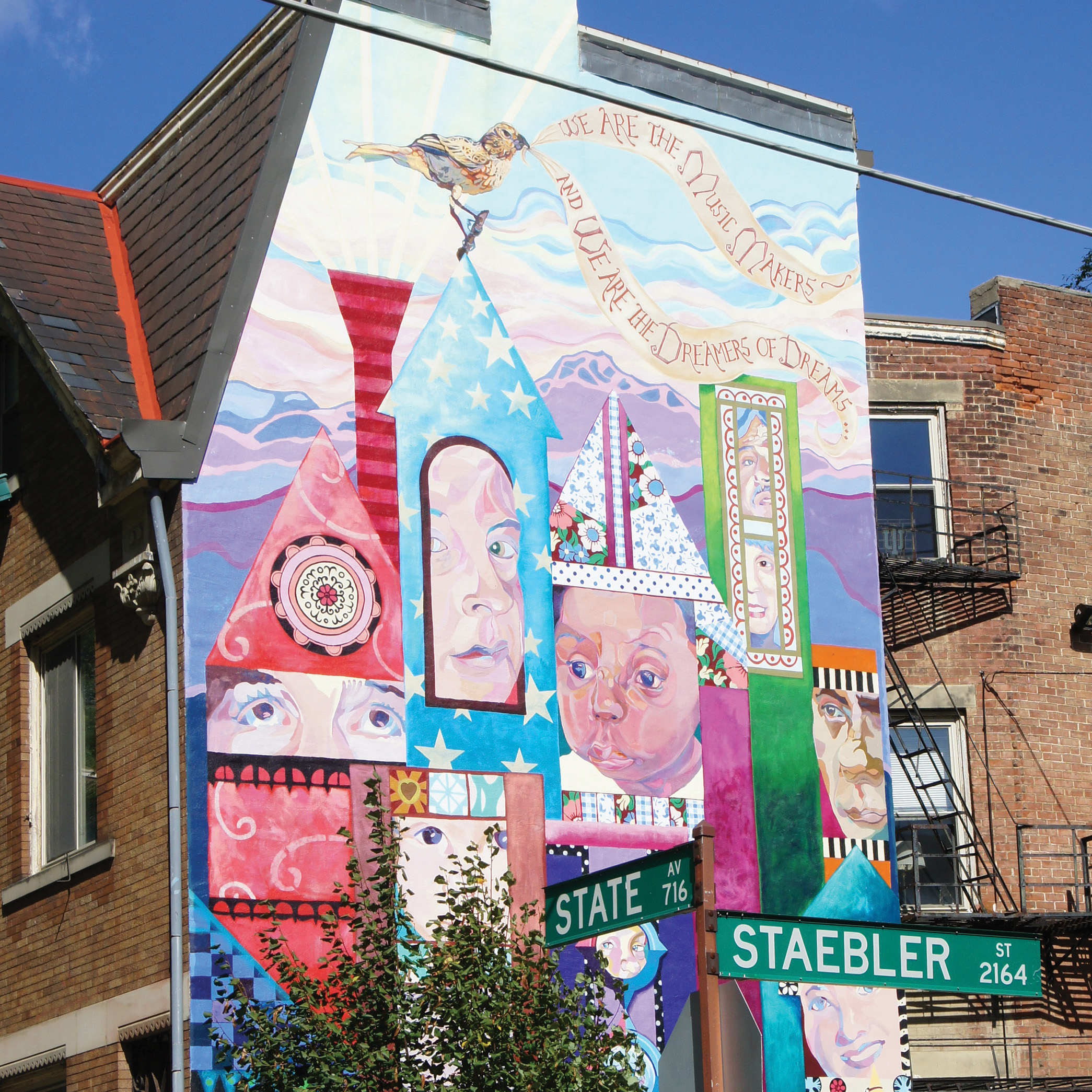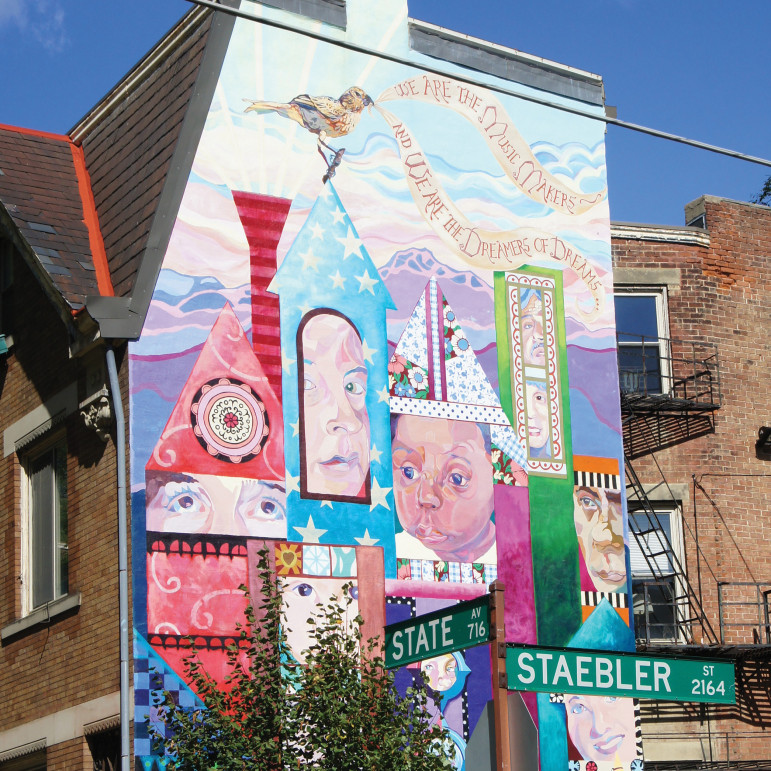
Photos by Stell Simonton
A mural brightens the wall of the Santa Maria Community Services office on State Street in Cincinnati. A youth-development program there helps kids with academics, teaches social and emotional skills, and works with families to promote each child’s well-being.
CHICAGO — “Childhood was invented here,” reads a quotation stenciled on a wall inside Hull House, the Chicago settlement house that is now the Jane Addams Hull-House Museum.
Opened in 1889, Hull House was part of a sweeping national movement that addressed the ills of industrialization: crowded slums, impoverished immigrants, exploitation of factory workers and a wide gap between the rich and poor.
Settlement houses were opened in poor areas of New York, Chicago, Boston and other major cities.
Middle-class and affluent young men and women, horrified by the conditions of urban slums, moved into those areas to live — and to open their doors to neighborhood residents, provide services and push for social change.
By 1900, Chicago had 35 such houses, according to the Hull-House Museum.
“Social work as a field is rooted in settlement houses,” said David McKinney, director of the Center for Engagement and Neighborhood Building, an association of 150 organizations that began as settlement houses. The Center, now part of the Washington, D.C.-based Alliance for Strong Families and Communities, dates back to 1911, when more than 400 settlement houses were in existence across the nation, serving immigrants and other women, men and children in need of social services.
Reimagining childhood
Out of the settlement movement came a new vision of the needs of youth.
“The care of young people was a core focus of settlement houses,” McKinney said. “You see [this focus today] in early-childhood programs, after-school programs and the focus on access to recreation.”
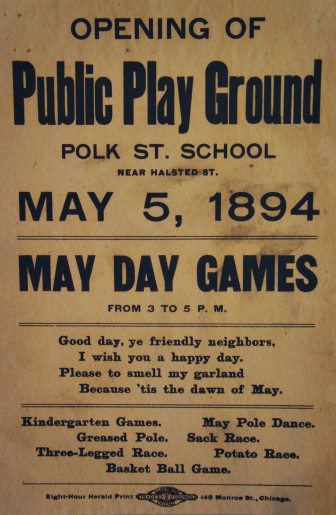
Hull House established Chicago’s first public playgrounds. Reformers of the time argued for the value of children’s play, believing children should follow their natural curiosity and learn through pleasurable experiences.
For example: Hull House opened the first public playground in Chicago in 1893.
Reformers there believed play could change the world, according to an exhibit in the museum last fall. At a time when poor children played in the streets — and also worked in factories — leaders of the burgeoning playground movement not only promoted safe, designated spaces for play, but believed that play taught children how to function in a democracy.
Settlement houses also had numerous clubs for kids and adults. At Hull House in the 1930s, the Harlequin Club was both a social and dramatic club for young people ages 15 through 18. They rehearsed productions, had Saturday afternoon dances, and used the gym on Sunday evenings for basketball and roller skating.
A boys’ airplane club was busy building model airplanes in 1934. Hull House even had “doll clubs,” where children who had no dolls and no place to play at home could come and play “house” in “wholesome and creative play,” according to Hull-House’s 1934 yearbook.
“Access to arts and recreation has been the work of settlement houses,” McKinney said.
Many organizations that started out as settlement houses have evolved. Some still maintain their identity, but others define themselves today as community-based organizations, neighborhood service centers or social-service organizations, he said.
Settlement house values
Nevertheless, these organizations reflect the historic values of the settlement house movement, McKinney said.
Social justice, he pointed out, is a deeply embedded value. Another is reciprocity.
The founders of settlement houses took up residence in the neighborhoods they sought to serve. Jane Addams and Ellen Gates Starr, for example, moved into a dilapidated mansion that became Hull House on South Halsted Street in Chicago. Immigrants from many nations called the street home.
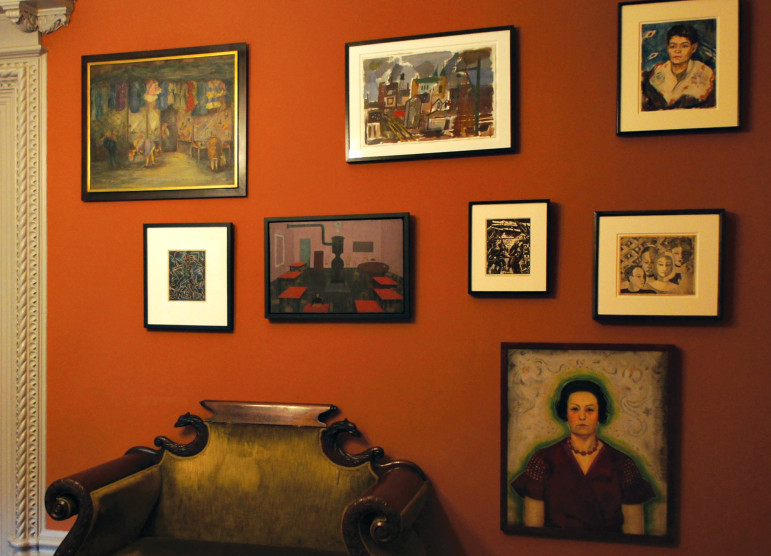
A portrait of Jane Addams hangs in the Jane Addams Hull-House Museum in Chicago. The museum is one of the few remaining buildings of the settlement house complex she co-founded in 1893 and is the building in which she lived. Addams was a social reformer, Nobel Peace Prize winner and author who influenced public policy on immigrants’ rights, fair labor practices, recreation and public space, among other issues.
Lillian Wald, a well-to-do young woman who came to Manhattan to study nursing, moved into the impoverished Lower East Side to offer nursing services — and founded the Henry Street Settlement there in 1893.
By settling in the neighborhood, reformers felt they created a more equal relationship with the residents, wrote Kenneth Jackson in “The Encyclopedia of New York City.”
Most social workers today don’t live onsite, but modern settlement houses maintain a reciprocal relationship with the community, McKinney said.
Settlement-house reformers pushed for legislation on many issues, including fair labor practices, immigrants’ rights and women’s rights. Jane Addams helped launch the nation’s first juvenile court.
Another focus was to “get kids access to the out-of-doors and out of dense urban neighborhoods,” McKinney said. Many settlement houses own property outside the city and run camps, he said.
Modern efforts
Hull House is no longer providing social services, but other settlement houses have continued to function.
For example, 38 active settlement houses and community organizations in New York City are part of an alliance known as United Neighborhood Houses.
“They really are strong and deeply engaged in settlement house values, history, tradition and identity,” McKinney said.
Member organizations take a neighborhood-centered, multiservice approach and together serve more than 500,000 people in New York City.
Among them is the 125-year-old Riis Settlement House, founded in Queens, N.Y., by Jacob Riis, a Danish immigrant who became a journalist and reformer. His 1890 book, “How the Other Half Lives: Studies Among the Tenements of New York,” spurred social reform and gave impetus to the growing settlement-house movement across the country.
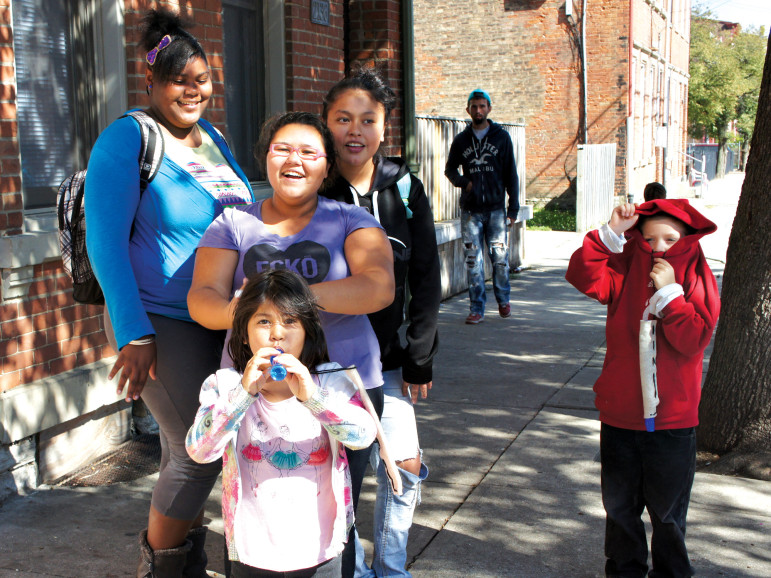
Children congregate outside Santa Maria Community Services in the Price Hill section of Cincinnati. Santa Maria began as a settlement house serving an Italian neighborhood but shifted to serve an influx of families from Appalachia.
Today Riis Settlement serves more than 1,000 kids — from kindergarten through 12th grade — in after-school programs at two community centers and two public schools. It also operates a senior center and an immigrant services program.
In Cincinnati, Santa Maria Community Services began in 1897 as a settlement house, founded by the Sisters of Charity to assist Italian immigrants. The community changed in the mid-1900s as residents of Appalachia flooded into Cincinnati seeking work. Today, Santa Maria Community Services engages the Greater Price Hill neighborhood, which is populated by the descendants of those Appalachian families as well as newer African-American and Latino residents.
A youth program operates inside a narrow building on State Street, brightened by a tall mural on the side. Kids congregate here on the sidewalk after school. On a sidewalk around the corner, residents had set up a makeshift memorial of balloons, stuffed animals and candles at the site of a fatal shooting.
“Our kids have all kinds of trauma in their lives,” said Jim Holmstrom, who directs the youth-development program. He works with kids in grades six through eight who are referred by their school. The kids get math and reading tutoring, and they each participate in weekly groups that focus on social and emotional skills, Holmstrom said.
The staff also meets with parents to work together to meet the children’s needs.
Holmstrom has been with Santa Maria for 37 years and has a deep connection with the community. Some of the parents were once in his program.
Santa Maria also continues its work with immigrants. Its International Welcome Center offers English and Spanish literacy classes, said President and CEO A.H. Musser. The center also offers support groups and coffee hours to help immigrants get acclimated — to each other and to the Cincinnati area.
Organizations like Santa Maria take pride in their settlement house roots and their ability to serve over a long period of time. The settlement-house movement probably reached its peak just before World War I, but its influence continues into the present.


